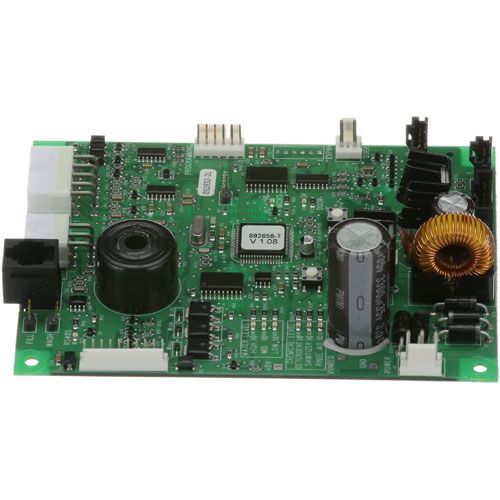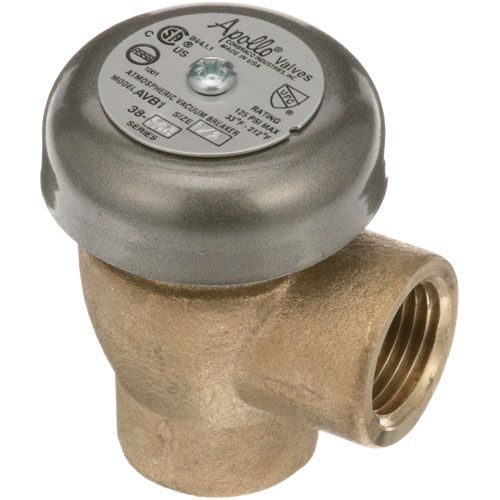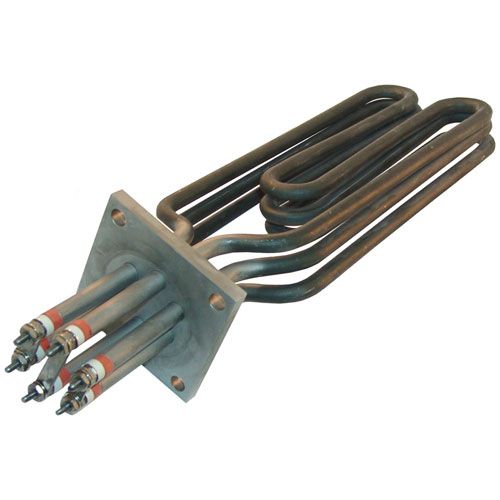Most Common Dishwasher Parts That Break: Causes & Fixes Simplified
In a commercial kitchen, your dishwasher is a critical part of daily operations. When it fails, dishes pile up, service slows, and cleanliness suffers. As a restaurant owner or chef, understanding key dishwasher parts and their functions can help prevent costly breakdowns. Most dishwasher issues come from a few common components that wear out under heavy use. Knowing the warning signs and quick fixes keeps your kitchen efficient and compliant with health standards. This guide breaks down the most frequent part failures, their causes, and how to fix or avoid them. Whether you run a bustling restaurant, staying informed means less downtime, lower repair costs, and smoother service every shift.
Understanding Your Dishwasher Parts and Their Functions
Understanding the essential dishwasher parts and their functions is essential before examining typical failure points. Learners who understand the functions of each part simplify both troubleshooting efforts and machine maintenance.
-
Spray Arms: The dishwasher's spray arms use high-pressure water to clean every part of the machine as it rotates through the dishwasher. The cleaning performance suffers when blockages or damage occur to these components.
-
Heating Element: During both the washing cycle and the drying phase, the dishwasher heating element functions to heat water and evaporate moisture. A defective heating element causes both unclean and undried dishes.
-
Door Latch Assembly: The door latch assembly maintains a secure door closure throughout cycles to stop leaks from occurring. A defective door latch prevents dishwasher operation and can lead to water leakage.
-
Detergent Dispenser: The dishwasher rinse aid dispenser controls when detergent is released during the cycle. When the dispenser fails, it can release detergent prematurely or not at all.
-
Pump and Motor Assembly: The pump operates to distribute water through spray arms before draining the water at the end of the cycle. A malfunctioning pump will result in improper cleaning and drainage issues for the dishwasher.
-
Float Switch: The float switch tracks water height to stop the water supply and turn off the water when necessary. A defective float switch leads to either water flooding or improper water level maintenance.
-
Water Inlet Valve: The dishwasher water inlet valve operates as the primary component for managing dishwasher water entry at cycle initiation. A dishwasher that has a clogged or faulty water inlet valve will struggle to fill up with enough water during operation.
-
Control Board or Timer: The control board or timer operates the dishwasher components by controlling both timing functions and cycle operations. A malfunctioning system can trigger dishwasher cycles to stop or block the dishwasher from beginning its operation.
Your knowledge of these parts will help you identify dishwasher issues so you can either repair them yourself or explain the problems to a repair technician.
Are you looking for reliable dishwasher parts and accessories? PartsFe has the parts you need! From dishwasher heating elements, pump motors, spray arms, and door seals, we offer top-quality replacements. Shop trusted brands like Jackson, Hatco, and Garland to get your dishwasher back in action today!
Identifying Common Issues with Dishwashers
Commercial kitchen dishwashers typically develop problems that belong to several common categories. Identifying these symptoms at an early stage enables you to determine the problem and stop it from disrupting peak-time service.

-
Poor Cleaning Performance: The dishwasher's performance issues, such as dirty dishes, spots, and soapy residue, indicate problems with spray arms, pump wear, or detergent dispenser failure. The dishwasher's performance can be affected by unstable water temperature and insufficient water pressure.
-
Leaks or Standing Water: The presence of water accumulation at the bottom or leakages during a cycle indicates either a drain blockage or a faulty float switch, or a damaged door seal. Water damage alongside safety hazards will occur if you fail to address leaks.
-
Failure to Start or Complete Cycles: If the dishwasher fails to start or becomes stuck, check the door latch, control board, and timer. If these components are faulty, the cycle will fail to finish.
-
Strange Noises: The pump's water flow becomes disrupted when debris or food particles get trapped inside because they produce grinding, buzzing, or rattling noises. The noises stem from either worn motor bearings or loose spray arms, or debris trapped in the pump.
-
Drying Issues: Wet dishes after a cycle indicate that the heating element fails to reach proper temperature levels during the cleaning process. The drying process may be negatively impacted by incorrect rinse aid dispensing methods.
The majority of dishwasher problems originate from several components that fail regularly. Identifying broken components early lets you replace defective dishwasher repair parts to maintain kitchen efficiency.
For more insights, check out this detailed guide on how to fix a commercial dishwasher drain hose for resolving drainage-related issues step by step.
Causes and Fixes for the Most Common Dishwasher Part Failures
The identification of dishwasher part failure enables better maintenance of your kitchen's operational efficiency. This section investigates frequent dishwasher part breakdowns while identifying their root causes, along with solutions that will restart your dishwasher.
Spray Arms
The presence of food debris and mineral buildup inside the appliance blocks water flow.
Fix: The solution to this problem requires inspection of the spray arms after their removal to check for blockages. Warm, soapy water combined with a small brush will help you clean the spray arms by clearing the holes. Soak the spray arms in vinegar solution for thirty minutes to dissolve mineral buildup before rinsing them clean. You should replace the entire spray arm if cleaning methods fail to solve the issue.
Door Seal or Gasket
The combination of heat exposure and moisture, and detergent usage has caused the part to wear out.
Fix: Check the door seal for any signs of damage or deterioration. The gasket needs replacement when you detect any signs of damage. The process of replacing a door seal remains straightforward when you obtain the proper part for your dishwasher model and follow the manufacturer's guidelines for installation and removal steps.
Dishwasher Pump
The pump becomes blocked by debris while motor failure occurs due to excessive use.
Fix: Check for visible obstructions in the pump area whenever you see standing water after a cycle. Carefully remove clogs when they exist. If the malfunctioning pump cannot be repaired, it requires replacement. The pump location depends on your dishwasher model because some models require extensive disassembly to access the bottom of the appliance.
Heating Element
The heating element fails because of extended operation or because hard water leaves mineral deposits.
Fix: The inspection of the heating element requires observation for any signs of wear and discoloration, or visible breaks. A multimeter allows you to test the heating element for proper functioning. The heating element requires replacement when it becomes defective. The replacement process should be simple, but always disconnect the dishwasher power before starting any repairs.
Dishwasher Detergent Dispenser
The dispenser contains detergent residue while the latch mechanism is broken.
Fix: Begin by inspecting the detergent dispenser to remove accumulated residue. Wash the dispenser with warm water using a soft cloth to eliminate all debris and soap scum. Check the dispenser door latch and spring mechanism for damage when the door fails to open properly. You can fix the dispenser by yourself by replacing the part when necessary, although this is a simple process.
Float Switch
The float switch becomes stuck because of electrical malfunctions combined with debris accumulation.
Fix: Open the float to visually check for buildup and debris. Use gentle movements to check if the float is caught. A multimeter should be used to check the float switch continuity when the float moves freely, yet the dishwasher remains nonfunctional. The switch replacement process becomes simple when you remove the bottom dishwasher panel to reach the switch.
Water Inlet Valve
The dishwasher water inlet valve fails to work properly because of electrical issues or because it has accumulated debris.
Fix: Begin by inspecting the valve and dishwasher drain hose for any detectable damage. You should attempt to clean the valve or replace its filter screen if it becomes clogged. A non-functioning valve requires replacement as the next course of action. The process of water inlet valve replacement requires users to disconnect the dishwasher from its water supply and remove the valve before installing a new one.
Control Board or Timer
The valve or hose suffers damage from electrical short circuits and physical wear.
Fix: Professional assistance becomes necessary to diagnose control board problems because their diagnosis requires advanced expertise. You can inspect the control board for signs of damage, such as burnt components or corrosion, but professional help is needed to diagnose and fix it. The control board requires replacement in case of necessary repair.
The combination of proper dishwasher replacement parts selection and failure understanding results in reliable machine operation alongside brief operational interruptions.
Check out this helpful Jackson dishwasher troubleshooting guide to spot early signs of dishwasher trouble that can save time and prevent major breakdowns.
Preventing Future Problems with Your Dishwasher Parts
To avoid future difficulties, you need to perform regular upkeep and actively maintain your dishwasher parts. A few basic regular tasks will help your machine survive longer, along with reducing your repair expenses.
-
Clean Filters Regularly: The filters in your dishwasher serve to catch food debris, which stops it from blocking the pump and spray arm mechanisms. The filters inside your dishwasher will eventually become blocked, which reduces its operational efficiency. Regular cleaning of these components every few weeks will maintain proper water flow and cleaning performance.
-
Inspect and Clean Spray Arms: Regular inspection of spray arms should include checking for food debris and mineral buildup that could cause blockages. Running proper cleaning routines on the equipment ensures regular water distribution and stops clogging from happening.
-
Check Door Seals: The door seal functions to stop leaks from occurring when the dishwasher runs its cycles. Check the seal for any signs of damage and wear. A damp cloth should be used to wipe down the appliance and remove food particles that could potentially harm the machine.
-
Use the Right Detergent: Always use high-quality, dishwasher-specific detergent. Using excessive detergent will lead to soap accumulation that can harm components, including the detergent dispenser.
-
Run Monthly Cleaning Cycles: A monthly cleaning cycle with dishwasher cleaner or white vinegar should be run on an empty machine to eliminate mineral deposits and buildup within the appliance.
According to these basic guidelines, you can stop numerous dishwasher issues from occurring while ensuring your kitchen operates without interruption.
Also, check out our commercial dishwasher maintenance tips to prevent future issues with your dishwasher, with expert tips to keep your dishwasher in top condition.
Learning about the different parts of dishwashers simplifies their maintenance procedures. The majority of dishwasher problems emerge from a few essential components that either deteriorate or become obstructed over time. The four essential commercial dishwasher parts include spray arms and heating element and detergent dispenser, and pump. Clients who spot issues through poor cleaning and strange noises will be able to identify and resolve problems earlier to limit more significant damage to their appliance. Damaging your device's structure and its operational life will be halted because of this maintenance routine, which will prevent you from spending money on repairs and make your dishes shine bright in every cycle.
FAQs
Why should I keep dishwasher spare parts on hand?
Having dishwasher spare parts on hand saves time and money during breakdowns. Quick replacements for critical parts like pumps and seals prevent delays in repairs.
Is it worth fixing a broken dishwasher?
It depends on the cost of repairs versus replacing the unit. If the repair is minor and the dishwasher is relatively new, fixing it is usually worth it.
Should you use rinse aid in the dishwasher?
Yes, rinse aid helps prevent water spots, improves drying, and enhances cleaning efficiency, especially in hard water areas. It’s recommended for optimal results.
Why isn't my dishwasher's wash arm spinning?
The wash arm may be blocked by debris, obstructed by dishes, or not spinning due to motor or pump issues. It could also be damaged or cracked, affecting performance.











